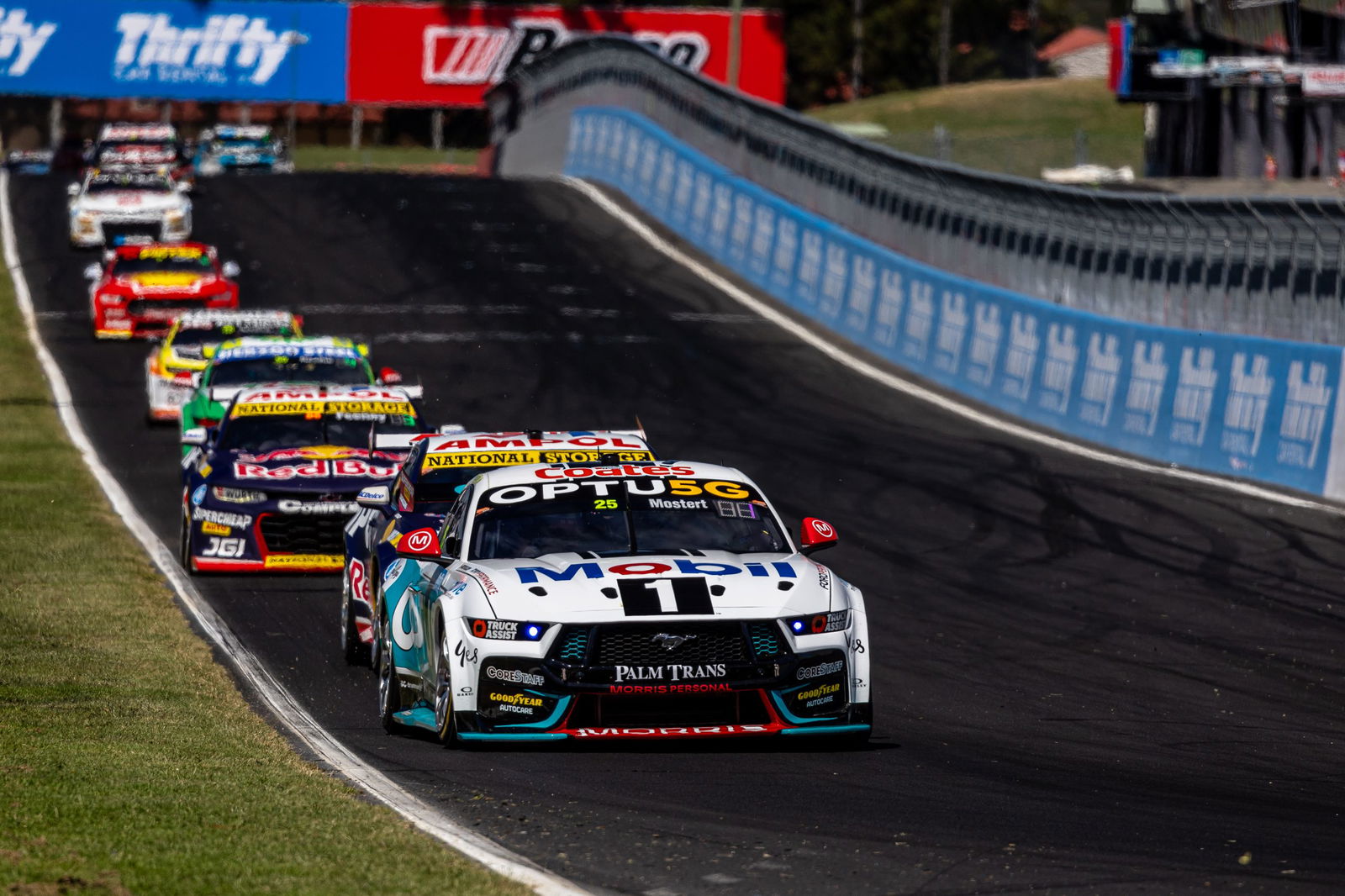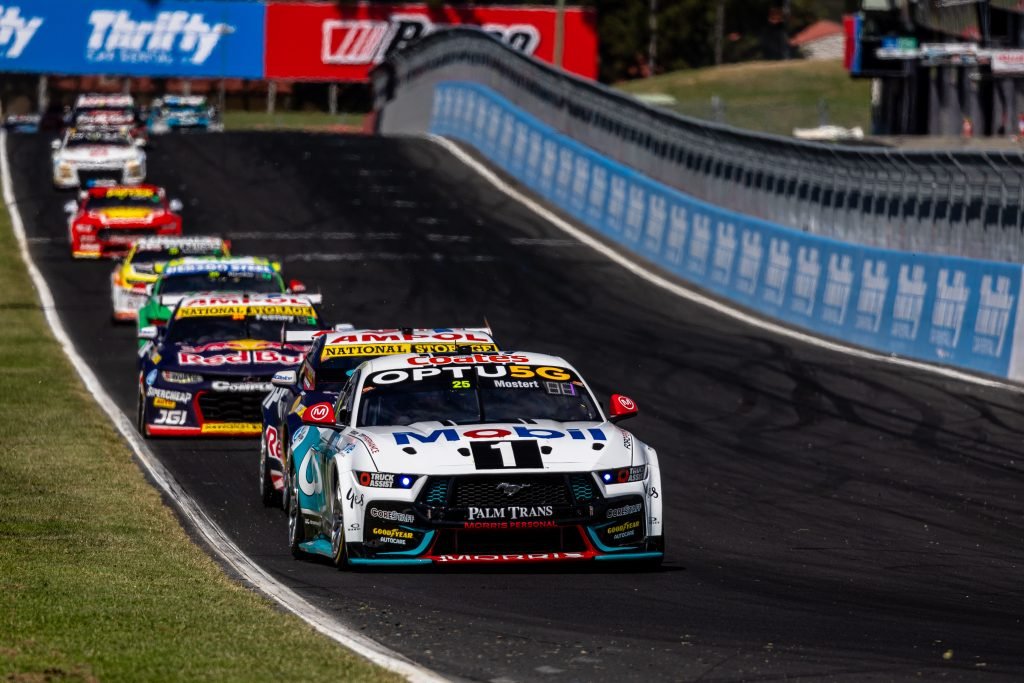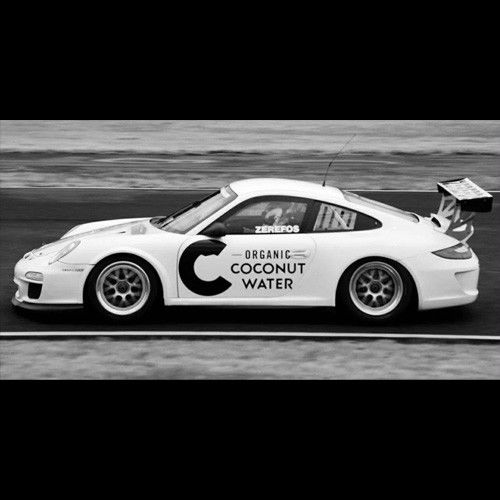

While Chevrolet homologation team Red Bull Ampol Racing walked away from the Thrifty Bathurst 500 with an almost perfect score – two wins, a second place, and a third place – Mostert was able to mix it with Broc Feeney and Will Brown, particularly on the Sunday.
The two-time Bathurst 1000 winner put his #25 Mobil 1 Optus Mustang on the front row and led for much of Race 2, although a minor error on his in lap contributed to Brown leapfrogging him in their final stops.
Nevertheless, a third and second place in two races at Mount Panorama, thanks to genuine car pace, is a much better outcome than might have been expected last October at the Bathurst 1000.
There is now broad agreement that aerodynamic parity between the Mustang and Camaro has been established, although the Ford camp believes it is still on the wrong end of an engine disparity, albeit a smaller one after off-season development by Dick Johnson Racing.
Walkinshaw, a co-owner of Walkinshaw Andretti United, also expressed confidence that the plans which are in place will ultimately yield full technical parity.
“I think it’d be quite hard for anyone in this room or fan not to say that Supercars have made a big step forward from last year,” he said when asked by Speedcafe if he is happy with the process which is in place and the work on the homologation front.
“Going to the wind tunnel testing at Windshear was a fantastic initiative – a costly one for the sport but the right thing to do – and I don’t think there’s anyone who’s going to disagree with me, actually, that the parity on the on the aero is pretty much spot-on now. I think all the drivers I’ve spoken to from a variety of different teams have said that.
“We do still know that there’s a little bit of work to do on the engines.
“I don’t want to start a parity debate because I don’t think that’s the right time to do it and it’s only one track, but this track does show that in quite strong force.
“So, we know there’s additional testing coming with Supercars, we know that there’s engines that are going to get ripped out of cars after this weekend, essentially, and get dynoed as well, to try and understand what some of the discrepancies are.
“But, I think it’s important to note that we are a hell of a lot closer than we were last year.
“Because, last year, what we saw over this weekend with Chaz fighting with these boys [Brown and Feeney], it didn’t happen pretty much for the entire year.
“So, big step forward; Supercars should be commended for the initiative and taking the leap to go and do world’s best practice.
“We know there’s a little bit more work to do on the engines, but I’m confident that the plan will get us there and we just need to make sure it happens as fast as possible.”
Speed trap figures suggested that the Fords are still down relative to the Chevrolets in terms of engine performance, although Mostert’s lack of speed down the straights appeared to be influenced much more by set-up, considering how fast he was in Sector 2.
Nevertheless, with parity having been established on an AEP (Accumulated Engine Power) basis, the trap speeds point to the possibility of an ongoing transient deficit.
Ford Performance Motorsports Global Director Mark Rushbrook, who was in attendance at Bathurst, said, “We don’t want to jump to conclusions from the data that we’ve seen so far, from the on-track performance that we’ve seen so far.”
However, he commended Supercars for committing to transient dynamometer testing, a date for which is yet to be locked in, but is expected to be undertaken in coming months.
Rushbrook did, though, say Ford can “absolutely” be a championship contender this year, while Mostert said his performance changes his expectations for the season ahead.
He is third in the drivers’ standings, 21 points behind leader Brown, on the way to Albert Park next month.





















Discussion about this post